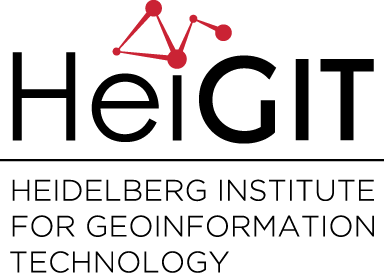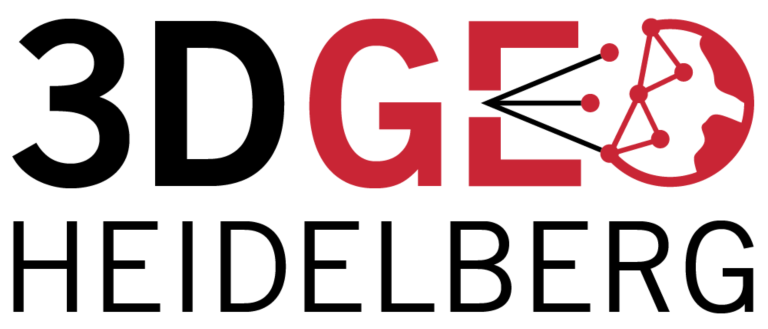Month: December 2018
-
Seasons greetings by GIScience Heidelberg
The whole GIScience Heidelberg research group does wish to all of you happy and peaceful holidays and all the best for the new year! We are looking forward to working together and especially welcome you to Heidelberg in 2019 for the State of the Map conference and HOT Summit or any other opportunity. Let’s bridge…
-
openrouteservice-js – your JS library for spatial node applications!
And here comes another little Christmas present by HeiGIT: In addition to our previously released and highly appreciated python and R libraries we now offer an additional JavaScript API making the usage of the openrouteservice ecosystem covering the entire globe based on OpenStreetMap in your web applications terribly simple. From now on you will be…
-
Accessibility analysis of public transport in Stuttgart
The Statistical Office of the City of Stuttgart determined the walking time to the nearest public transport stop for every place in the city using our QGIS plugin OSM Tools. With OSM Tools it only takes a few mouse clicks to access most of the functions of the openrouteservice. The toolset includes routing, isochrones and…
-
openelevationservice: enrich geometries with elevation
We published a new endpoint within the openrouteservice API ecosystem: openelevationservice. It queries a remote DEM for every vertex of a LineString or Point geometry. The underlying DEM is limited to SRTM v4.1 by CGIAR Consortium for Spatial Information as of now, though we’re working towards integrating more high-resolution datasets. openelevationservice returns the altitude of…
-
SYSSIFOSS – Synthetic structural remote sensing data for improved forest inventory models
Airborne light detection and ranging (LiDAR) data provides reliable information on forest structure. Related forest inventory approaches recently evolved into operational tools. Today, further optimization of existing approaches is pursued to ensure high data quality of the inventory information and cost-efficiency over varied environmental and silvicultural conditions. Synthetic LiDAR data has been suggested as useful…
-
Dokumentation zur diesjährigen Fachtagung Katastrophenvorsorge ist online
Die Fachtagung Katastrophenvorsorge wird jedes Jahr vom Deutschen Roten Kreuz organisiert, mit dem Ziel eine Dialogplattform für verschiedene Akteuren der nationalen und internationalen Katastrophenvorsorge zu schaffen. In Kooperation mit dem Bundesamt für Bevölkerungsschutz und Katastrophenhilfe (BBK) und dem Zentrum für satellitengestützte Kriseninformation (ZKI), haben wir vom HeiGIT den Workshop „Geodaten in der Katastrophenvorsorge“ durchgeführt. Anhand…
-
Spatial conceptual compliance analysis with the OpenStreetMap History Database (OSHDB)
In a previous blog post we performed a conceptual compliance analysis between OSM data and several tagging-guidelines using the OSHDB API. The results were visualized in a line chart, comparing the different compliance ratio over several months. The following analysis focuses on a spatial representation of the conceptual compliance. It is conducted for the “iD-editor”…
-
How to become ohsome part 1: Visualizing the historical evolution of OSM buildings of your city
This blog post is the start of a series of posts, which describe what you are able to do using the ohsome framework developed at the Heidelberg Institute of Geoinformation Technology (HeiGIT). OpenStreetMap (OSM), the biggest open map of our world, offers not only the current state of the data, but the whole historical evolution…
-
Complex Networks 2018 Conference: Dimension as an Invariant of Street Networks
F-B Mocnik participates in the Complex Networks 2018 conference, presenting work about the impact of space on network representations. Street networks have been examined in respect to their structure. F-B Mocnik has previously examined networks from various domains, thereby demonstrating that the polynomial volume law applies to many of them. The presentation at the conference…
-
Today! ChristMAP Workshop: Create unique presents using OSM and Satellite Imagery by disastermappers heidelberg
Christmas is just around the corner and the disastermappers heidelberg are organizing another workshop on the use of OpenStreetMap data. As last year they will present different ways to craft personal Christmas gifts based on OpenStreetMap features. Additionally they will also show how to use open satellite imagery archives captured by Sentinel and Landsat mission. Together…
-
HOT Summit 2019 is coming to Heidelberg
We are happy to hereby share latest information about the 5th HOT Summit- the annual gathering of the Humanitarian OpenStreetMap Team community- which after great events in Washington, Brussels, Ottawa and Dar es Salaam, will next year come to the picturesque city of Heidelberg, September 19th and 20th. HOT Summit 2019 as well as the…


